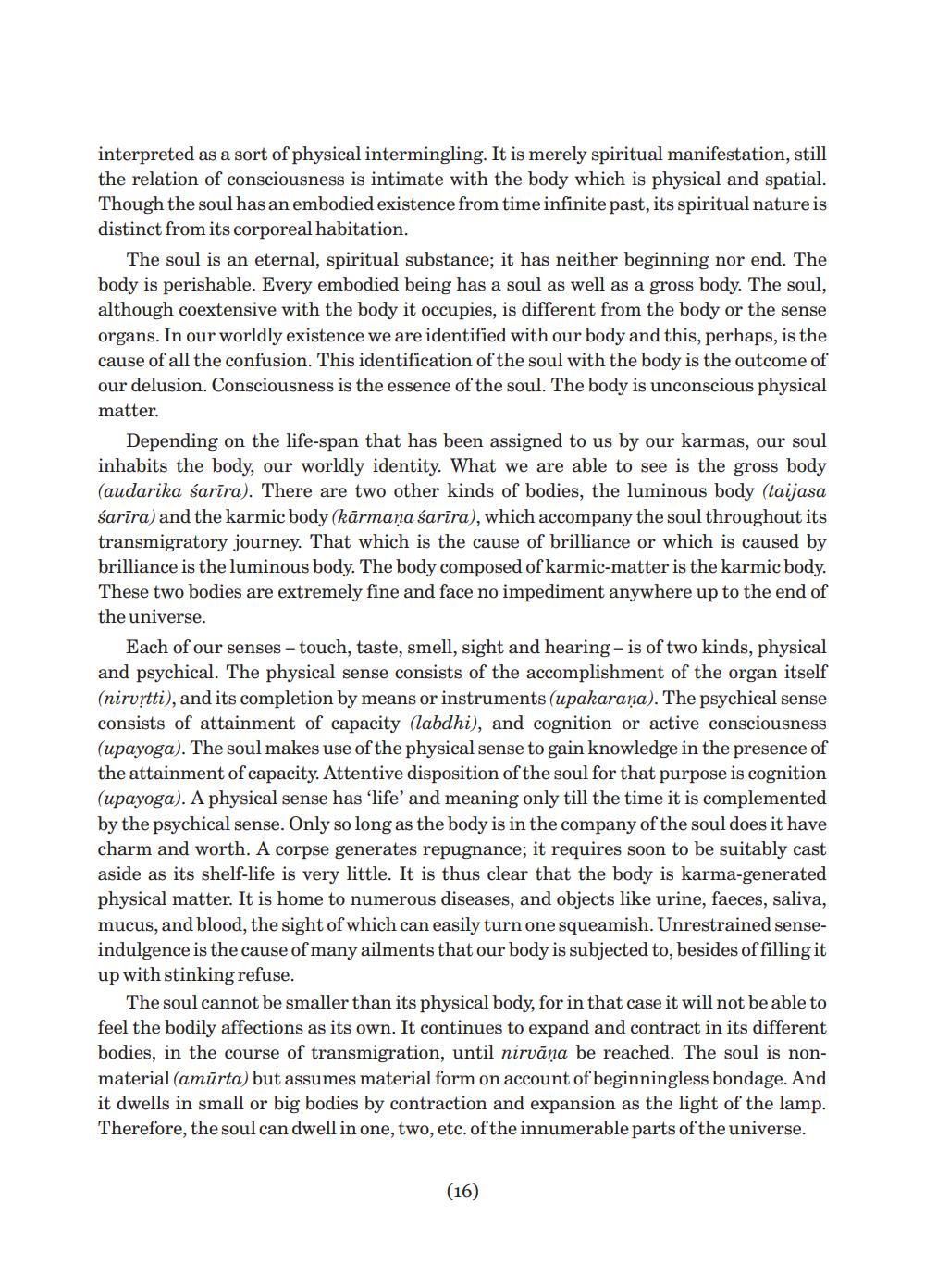________________
interpreted as a sort of physical intermingling. It is merely spiritual manifestation, still the relation of consciousness is intimate with the body which is physical and spatial. Though the soul has an embodied existence from time infinite past, its spiritual nature is distinct from its corporeal habitation.
The soul is an eternal, spiritual substance; it has neither beginning nor end. The body is perishable. Every embodied being has a soul as well as a gross body. The soul, although coextensive with the body it occupies, is different from the body or the sense organs. In our worldly existence we are identified with our body and this, perhaps, is the cause of all the confusion. This identification of the soul with the body is the outcome of our delusion. Consciousness is the essence of the soul. The body is unconscious physical matter.
Depending on the life-span that has been assigned to us by our karmas, our soul inhabits the body, our worldly identity. What we are able to see is the gross body (audarika sarira). There are two other kinds of bodies, the luminous body (taijasa sarira) and the karmic body (karmaya sarira), which accompany the soul throughout its transmigratory journey. That which is the cause of brilliance or which is caused by brilliance is the luminous body. The body composed of karmic-matter is the karmic body. These two bodies are extremely fine and face no impediment anywhere up to the end of the universe.
Each of our senses-touch, taste, smell, sight and hearing-is of two kinds, physical and psychical. The physical sense consists of the accomplishment of the organ itself (nirvṛtti), and its completion by means or instruments (upakaraya). The psychical sense consists of attainment of capacity (labdhi), and cognition or active consciousness (upayoga). The soul makes use of the physical sense to gain knowledge in the presence of the attainment of capacity. Attentive disposition of the soul for that purpose is cognition (upayoga). A physical sense has 'life' and meaning only till the time it is complemented by the psychical sense. Only so long as the body is in the company of the soul does it have charm and worth. A corpse generates repugnance; it requires soon to be suitably cast aside as its shelf-life is very little. It is thus clear that the body is karma-generated physical matter. It is home to numerous diseases, and objects like urine, faeces, saliva, mucus, and blood, the sight of which can easily turn one squeamish. Unrestrained senseindulgence is the cause of many ailments that our body is subjected to, besides of filling it up with stinking refuse.
The soul cannot be smaller than its physical body, for in that case it will not be able to feel the bodily affections as its own. It continues to expand and contract in its different bodies, in the course of transmigration, until nirvana be reached. The soul is nonmaterial (amurta) but assumes material form on account of beginningless bondage. And it dwells in small or big bodies by contraction and expansion as the light of the lamp. Therefore, the soul can dwell in one, two, etc. of the innumerable parts of the universe.
(16)




